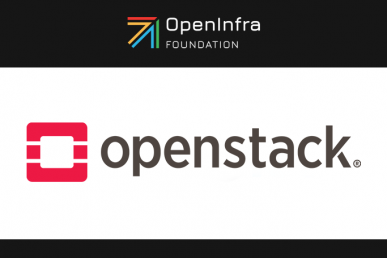If you’ve checked out an ebook or trawled through an online newspaper archive at a school or public library, it was probably thanks to EBSCO Information Services.
Used by about five million people worldwide, every day, this division of EBSCO Industries is one of the leading providers of resources for libraries including discovery, resource management, databases and ebooks. Which probably also makes it one of the largest tech companies you use but don’t know by name.
Powering these Information Services is a private cloud in transition. “We built a private cloud and we’re also embracing the public cloud as well. So we’re in a transition right now between a very well established and productive application framework that we built on our own managed data centers. To make that environment more productive, we’ve invested in private cloud technologies like OpenStack. We’re using Platform9, we’re using AVI software, load balancers, we have a lot of technology going there,” says CIO Doug Jenkins.
Trace the history of political figures, social leaders and fashionable #culturalicons through the @VanityFair Magazine Archive. https://t.co/Z2GgpK2ELY pic.twitter.com/08YyaPONUQ
— EBSCO (@EBSCO) January 11, 2019
They’re currently one of Platform9’s largest deployments: more than a 1,000 sockets and a workload that involves deploying Heat stacks hundreds of times a day. “They’ve stressed OpenStack and Neutron and Heat to levels we’d not seen before,” Bich Le, Platform9 chief architect tells Superuser in an interview at KubeCon + CloudNativeCon North America where the San Francisco-based startup announced five new managed Kubernetes customers.
A client of Platform9’s for about a year-and-a-half, EBSCO is now expanding to Kubernetes, making a “big push” as part of their modernization/digital transformation initiative, Lee says. As part of the push, they looked into Amazon EKS, but ultimately because of the multitude of data centers and mix of private data center and cloud and a mix of workloads they gravitated to Platform9. Le says they are just getting started with Kubernetes. In the short term, they’re redesigning many of their applications. Some of the databases are still kept external so they’re running stateless apps against those, but Le says that with time they’re considering migrating the stateful ones as well. They’re currently in the process of architecting a new stack for their next generation applications. They have, however already chosen some components, including Istio for the network mesh.
One thing will remain constant: They plan to continue running everything on OpenStack infrastructure-as-a-service “not bare metal, but Kubernetes on OpenStack,” Le explains. “It’s a very natural choice to make…if you have a mature IAAS, it’s just so much more attractive. The IAAS gives you a lot of flexibility, control and great utilization over your hardware.”
Especially if you have a mix of VMs and containers it makes sense to run them side-by-side, he adds. “If something goes wrong with a Kubernetes node, you can just kill it. It’s much more complicated when you’re dealing with bare metal.”
The Linux Foundation provided travel and accommodation to KubeCon.
Cover photo // CC BY NC
- OpenStack Homebrew Club: Meet the sausage cloud - July 31, 2019
- Building a virtuous circle with open infrastructure: Inclusive, global, adaptable - July 30, 2019
- Using Istio’s Mixer for network request caching: What’s next - July 22, 2019

)










